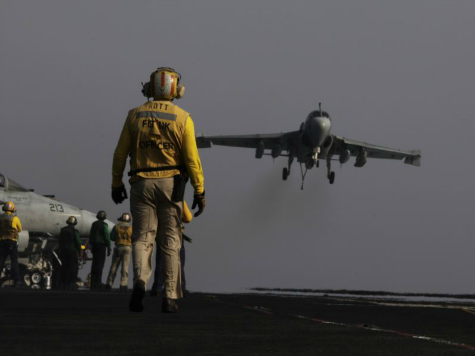This story originally ran at Cicero Magazine:
During the last decade and a half of militant extremism with global ambitions, asymmetric warfare has been a much-ballyhooed concept sometimes alleged to give the weaker belligerent an inherent, automatic advantage.
But this is a gross oversimplification, and when it takes root in the minds of those threatened by and opposing terrorism, it can become a self-defeating distortion of the truth. Asymmetric warfare goes both ways in conflicts between peers, near-peers, and non-peers alike; and the U.S. and our global partners should constantly be using innovative asymmetry to our own advantage, in every contest of wills we face.
Joint Publication (JP) 1-02, Department of Defense Dictionary of Military and Associated Terms, defines asymmetric like this: “In military operations the application of dissimilar strategies, tactics, capabilities, and methods to circumvent or negate an opponent’s strengths while exploiting his weaknesses.” Asymmetric warfare is nothing magical. The application of dissimilar strategies, tactics, capabilities, and methods is commonsense common practice in every kind of competition, including armed conflict, and it always has been.
Since that is true, it is striking that JP 1-02 had no definition of asymmetric at all until the definition was first introduced in 2012’s brand new JP 3-15.1, Counter-Improvised Explosive Device Operations. JP 3-15.1 is a doctrine document produced only after terrorists and insurgents in Iraq and Afghanistan had demonstrated both the ingenuity and the capability to develop and employ improvised weapon systems whose strategic effects sometimes far surpass their tactical impact, despite relatively small investments. But the fact that it took that painful experience to add the word asymmetric to our military lexicon should tell us that we are selling ourselves short, even if it is only because we have gotten too comfortable thinking of ourselves as the biggest kid on the block and the odds-on favorite.
Iraq and Afghanistan were the proving grounds for a new generation of IED tactics, including the way in which IED attacks have been staged, recorded, and then broadcast for all the world to see. Those tactics allowed Al Qaeda and the Afghan Taliban to deliver their own version of “shock and awe,” with devastating direct results for far too many of our American warriors and troubling indirect results for all Americans watching. The barbarous recordings of the beheadings of one civilian at a time are intended to have the same asymmetric strategic impact. How should we respond? By fighting our enemies just as asymmetrically as they fight us.
Asymmetry and The American Way Of War
In his groundbreaking 1973 book by the same name, Russell Weigley described The American Way of War as one of attrition and annihilation. During the Revolutionary War, Americans fought from a relative absolute position of weakness, and had to apply lots of asymmetric creativity to do that. Increasingly, however, Americans have been able to fight from a relative absolute position of strength, in a way that has overwhelmed the ability of our enemies to fight back. But even this is asymmetric, whether we call it that or not. In that transition from weakness to strength and beyond, Americans first relied on the sheer asymmetric weight of numbers pushed out by a logistics machine with no equal. Think World Wars I and II. Later – and outside the scope of Weigley’s treatise – Americans relied on the sheer asymmetric superiority of capabilities pushed out by that same machine. Think Gulf War I, and especially the early stages of Gulf War II.

COMMENTS
Please let us know if you're having issues with commenting.